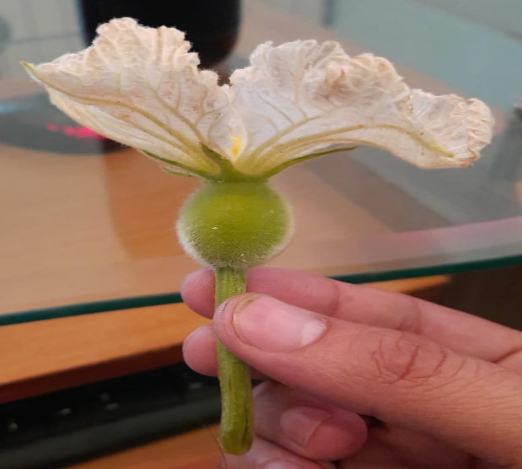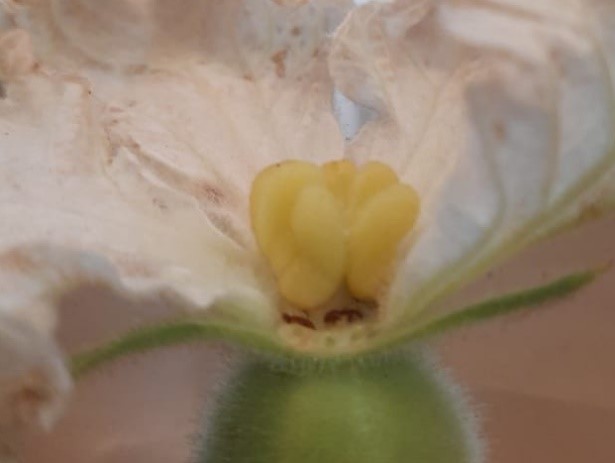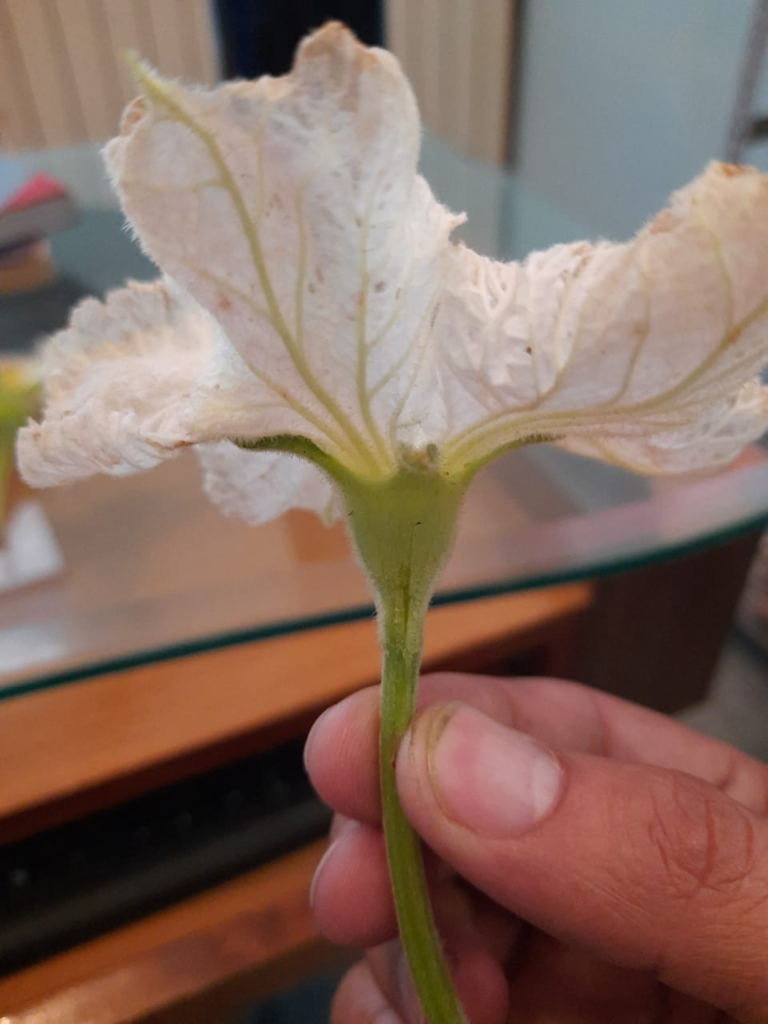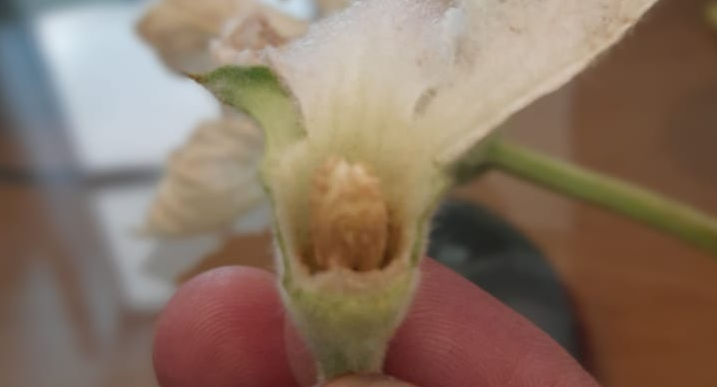Other Name- Loki or Geeya (Hindi)
Botanical Name: Lagenaria siceraria
Family: Cucurbitaceae
Chromosome Number: 2n=22
Origin: South Africa or India
Important Points
- Kofta, Petha and tooty –fruity are most popular preparation from bottle gourd.
- Bottle gourd highly sensitive to photoperiod.
- Dry shell is used for preparation of musical instrument.
- High temperature and high nitrogen content induce maleness in bottle gourd.
- Bottle gourd is Monoecious plant.




Area and production
It is also commonly grown in Ethiopia, Africa, Central America and other warmer regions of the world. It is commercially grown in a few states.
Table- State wise area and Production of Bottlegourd in 2018
|
States |
Area (000’ hac) |
Production (000’MT) |
|
Bihar |
41.44 |
649.69 |
|
Haryana |
24.38 |
364.69 |
|
Madhya Pradesh |
18.66 |
349.39 |
|
Uttar Pradesh |
14.52 |
427.81 |
|
Other Stats |
57.98 |
891.27 |
|
Total |
156.98 |
2682.85 |
Source: NHB database 2018
Economic importance
- Fruit may be long, oblong or round depending upon the variety. The fruits contain 0.2gm protein, 2.9 gm carbohydrates, 1.0 gm fat and 6.0 mg of vitamin C per 100g fresh weight.
- It is good for people suffering from biliousness and indigestion.
- Bottle gourd is a commonly grown vegetable in India. The fruits of bottle gourd can be used as a vegetable or for making sweets (e.g. halva, kheer, pedha and burfi) and pickles.
- A decoction made from the leaf is a very good medicine for curing jaundice. The fruit has a cooling effect; it is a cardiatonic and diuretic. The pulp is good for overcoming constipation, cough, night blindness, and as an antidote against certain poisons.
- The dry hard shells of the fruits have been used for making a wide range of articles of common use, including bowls, bottles, containers, floats for fishing nets and musical instruments.
Varieties
- Selection- Pusa Naveen, Arka Bahar, Pusa Summer Prolific Long, Punjab Round, Punjab Long, Pusa Summer Prolific Round, Samrat
- Hybrids- Pusa Mangari (Pusa Summer Prolific Round and Sel. 11), Varad, Punjab Komal, NDGB-1, Pusa Meghdoot (pusa summer prolific long and Sel.2), Gutka, Pusa Sandesh, PBOG-1, Harit,
- Long Variaties- Pusa Summer Prolific Long, Pusa Meghdoot, Pusa Naveen, Punjab Komal, Kalyanpur Long Green, Samrat, Pusa Hybrid 3, Pant Shankar Lauki 1, CO 1, Azad Nutan, Navendra Rashmi, Azad Harit
- Round Varieties- Pusa Summer Prolific Round, Pusa Manjari, Pusa Sandesh, Punjab Round,
Climate
It is worm season crop. It cannot tolerate high cold and frost. The bottle gourd is a typical tropical plant which requires warm and humid climate for the best growth. The optimum temperature for growth 30°-35°C day temperature and 180 – 220 C night temperature. It is highly sensitive to photoperiod. Short days and humid climate promote femaleness.
Soil
Bottle gourd can be grown on all types of soils, but sandy loam soils with high organic matter content are considered best. Soil should be well drained and the pH between 6-7. The soil should be deep. It can be raised successfully in riverbeds.
Season
The sowing time of bottle gourd different for different regions and conditions. Bottle gourd is grown in summer (February – March) and rainy season (June-July). In South and central India, where winter is neither severe nor long this crop can be grown almost through out the year.
Preparation of land
The land should be thoroughly prepared in order to get fine tilt for seed bed.
Sowing
Various systems of sowing have been adopted depending on the season, crop and system of cultivation. Raised bed or furrows are made at 2-3m. The sowing is done on the top of the sides of furrows and the vines are allowed to trail on the ground. The recommended spacing is 2-3m between two rows and 1.0-1.5m between two plants.
Two seeds sown in both sides of furrows. Finally good and healthy one seedling per hill should be kept.
Seed Rate and Seed Treatment
The recommended seed rate is 3-6kg/ha.
Pre-sowing treatment of seeds with 600ppm of succinic acid for 12hr improves germination and seedling growth as evidenced by more leaves per seedlings. Also see soaking in water for 12-24hr improves seed germination.
Manure and Fertilizers
The doses of fertilizers depend upon the soil type, climate and system of cultivation. Well rotten farmyard manure at the rate of 15-20 tonnes/ha is applied to the field at the time of preparation of land.
Table : Fertilizer recommendation in different states of India
|
State |
N (kg/ha) |
P (kg/ha) |
K(kg/ha) |
|
Punjab |
100 |
50 |
50 |
|
Tamil Nadu |
35 |
25 |
25 |
|
Gujarat |
25 |
50 |
25 |
Full dose of super phosphate and potash; and half dose of nitrogen before sowing and remaining half dose of nitrogen should be applied about a month later. It is better to complete all the fertilizer applications just before the fruit set.
Irrigation
During hot and warm weather, irrigation after every fourth or fifth day is needed to maintain proper soil-moisture level. In spring-summer crop, frequent irrigation is very essential, while in rainy season crop, irrigation may not be necessary at all, if rain fall is well distributed between July-September.
Weed control
2 to 3 weeding are necessary to keep the crop free from weeds. Herbicides can also be used in this crop. Better weed control was obtained with Fluchloralin 2.0kg /ha and Alachlor and Butachlor 2.5kg /ha in bottle gourd.
Training and pruning
This increases yield over untrained vine. Bower system of training is used to get more yield. A spacing of 2.5 x 1.0m was adopted in this system. In small home gardens, bottle gourd is trailed over thatched huts and walls.
After germination of seed the vine is to be trailed on bower with the help of jute string. The auxiliary buds are to be removed weekly till the vine attaining bower and finally the top of the vine is to be pruned 15cm below the bower allowing two auxiliary buds to grow which are later on trialed on the bower.
Use of Growth regulators
|
Sr. No. |
PGR/Chemical |
Doses |
Effective |
|
1 |
Ethrel |
150ppm |
Increase fruit setting |
|
2. |
MH (Malichydrazide) |
400ppm |
Increase fruit setting |
|
3. |
2,4,5-Triodobenzoic acid (TIBA) |
50ppm |
Increase fruit setting |
|
4. |
Boron |
3-4 ppm |
Increase Fruit setting |
|
5 |
MH + Nitrogen |
400ppm + 100Kg/H |
Increase female flowers, increase fruit set. |
Spraying the plants twice at the 2 and 4-true-leaf stage
Harvesting
Fruit should be picked every 3-4 days. Picking of fruits at the right edible maturity stage depends upon individual kinds and varieties. Tender, soft and having hairs on the rind of fruits are harvested. Seeds should be soft, if examined in transverse section. The crop is ready for harvest approximately 60 days after seed sowing, depending upon the variety and season.
Yield
The average yield of bottle gourd is 150-200 quantal/ha. However, the improved varieties or F1 hybrids yield up to 400 quantal/ha.
Plant protection measures of cucurbits
Watch Lecture Video:-
For more videos Go on our Youtube Channel :-https://youtube.com/channel/UCBWSYpP57pe_z9cXz25Qj7g
